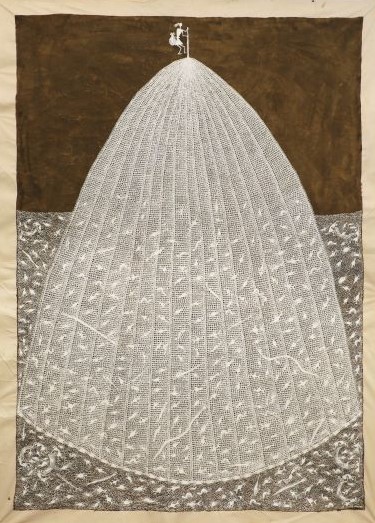
Balu Jivya Mashe, Cow Dung and Acrylic on Raw Canvas, 75.5 x 54 inches
Warli Art
Warli paintings come from a tribal community along the foothills of Sahyadhri mountains in the Thane district of Maharashtra, India. Primarily practised by the women of the community, the Warli style was not recognised as an artform until the 1970s, even though it has been in practice since centuries. It performs the social function of recording important events and transmitting local stories pictorially, amongst its most striking features are the exuberant, swirling geometric patterns inspired by nature, like circle for the sun and the moon, triangle for trees and mountains and square for sacred enclosures. With the brown mud walls consisting of cow dung as a background, the figures and motifs were contoured by the austere white paint, however the practice has now shifted contemporary media like treated canvas and paper. Warli art consists of clear cut lines, is relatively minimalistic, secular in subject and highly imaginative in composition. One of the most celebrated artists, Jivya Soma Mashe, also known as the master of movement and geometry, was the first man to take on a female-dominated tradition. In his work he captures the constant cyclical movement of life and is inspired by folklore and other stories narrated to children. His sons, Sadashiv Mashe and Balu Mashe, whose works are featured here, carry the tradition forward have shown with various galleries across the world.

